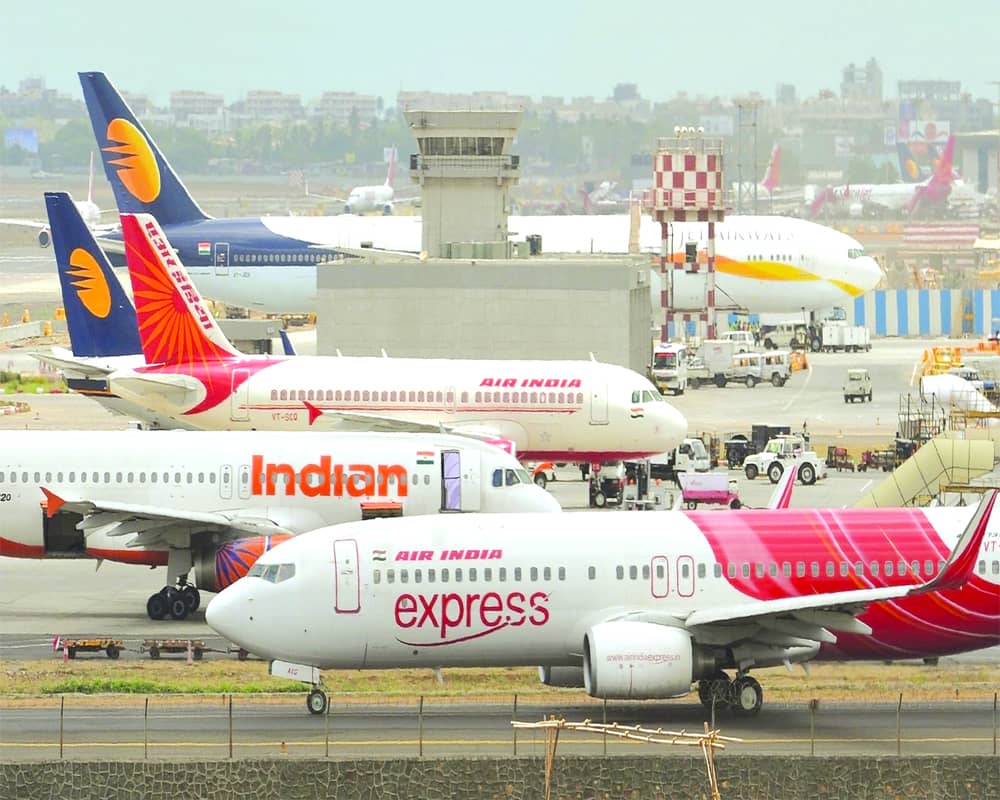The pandemic has severely hit the Aviation industry. During the peak of the pandemic, international and domestic flights were banned completely, thus impacting Indian civil aviation. IndiGo incurred net losses of ₹2,884 crore and ₹1,194 crore in the first and second quarter respectively. On the other hand, SpiceJet incurred net losses of ₹600 crore and ₹112 crore in the first and second quarter respectively. Indian aviation is expected to have losses of approximately ₹29,200 crore in fiscal year 2021 and of approx. ₹26,000 crores in FY2022. As observed, the losses are reduced in the latter period.
Investments in Indian airlines are imperiled. The gains and losses are unforeseeable. Indian Civil Aviation is an irony. Airlines in India have faced huge losses. Also, it has given birth to one of the most profitable airlines.
Source – Daily Pioneer
The civil aviation industry in India has emerged as one of the fastest growing industries in the country during the last three years. India has become the third largest domestic aviation market in the world and is expected to overtake the UK to become the third largest air passenger market by 2024.
People might be wondering that a pandemic has battered Civil Aviation. Not really,it just changed the perception. Airway became a common mode of transport rather than just for leisure and business; from PPE kits to anti Covid Vaccines.
The UDAN RCS or ‘UdeDesh ka Aam Naagrik Regional Connectivity Scheme’ launched in 2017 by the Prime Minister of India with a budget of ₹450 billion funded by both central government and state governments, signing the “Memorandum of Understanding” with the union government. It flagged off the first flight under RCS scheme in April 2017 from Shimla. The main objective is
1) Develop new airports.
2) Enhance the existing regional airports.
It aims to link smaller towns and cities to a wider air travel network. The scheme offers various concessions on air price by both state and national.
Cooperative Federalism is where local, state and national (Federal) governments share a flexible relationship and work together. It envisages all levels of government. UDAN RCS is a perfect example of cooperative federation.
Source – Business Standard
Recently, on 9th September Union Minister JyotiradityaScindia announced a 100-day plan for India Civil Aviation. The plan will include five new airports, six heliports. Also, 50 new flight routes will be commissioned under UDAN in the 100-day scheme. 60% of the new routes would be launched by October inclusive of 6 by Alliance Air and 4 each by SpiceJet and IndiGo. Adding to it Big Charter and Star Air will also launch 8 new routes each.
“The 100-day scheme will continue from 30th August to 30th November. It has 16 main points – 4 of which are under infrastructure, 8 under policy targets, and 4 under reforms,” said Scindia in a press conference. According to Scindia, the first airport will be in Kushinagar, Uttar Pradesh. It will have the capacity for the landing of flights- Airbus A321 as well as Boeing 737 aircraft. Kushinagar has been chosen as it’s an important hub for Buddhism tourism.
– ₹255 crores have been allocated for Kushinagar Airport. The Airport would be ready to be inaugurated by November 30th.
– ₹30,000 crore has been announced for Jewar Airport. Government aims to expand the passengers upto 7 crore per year in the near future.
– 6 new heliports with 4 in Himachal Pradesh and 2 in Uttarakhand for regional communication under regional air connectivity scheme UDAN.
– 5 new airports to be operationalized at Keshod, Deoghar, Gondia, Sindhudurg and Kushinagar under RCS – UDAN.
– Agartala Airport will be upgraded at an appropriate cost of ₹490 crore.
– New terminal to be added at Dehradun Airport being allocated ₹457 crore for revamp.
– Airsewa portal and Digi Yatra website will also be set up in the next 100 days.
Source – Jagranjosh
UDAN and 100-day civil aviation is affecting the environment. Trees would be slaughtered on a large scale leading to deforestation. Air vehicles emit Carbon dioxide in abundance. Aviation accounts for 3% of the global pollution.
For instance ; 11,000 trees will be uprooted for Jewar International Airport. 196 of the total trees including Peepal, which is vital for the environment, will be shifted to another location with the help of hydraulic machines.
Two years hence, will the officials keep record of which trees survived? Will they maintain the trees? What about the survival rates of the trees? For example, 60% of the trees transplanted for the Metro 3 project in Mumbai died. Similarly for Delhi metro too. Whereas the trees shifted for widening Nashik- Trimbakeshwar is a 100% success.
So, is tree transplantation worth it? As a personal opinion, NO. The transplantation disrupts the ecosystem. It’s not easy for the tree to get accustomed to the new surroundings. The shock is huge. But tree transplantation is one of the last options to save nature. Also, The Noida International Airport Limited (NIAL) has promised to plant 10 trees for each tree uprooted. There’s only Rs. 100 fees for each tree being chopped.
The Indian aviation industry is largely untapped with huge growth opportunities, considering that air transport is still expensive for the majority of the country’s population, of which nearly 40% is the upwardly mobile middle class.
Civil aviation is on the gradual path of recovery due to the effects of the pandemic.
Written by- Khushi Shah
Edited by- Khyati Kallianpur
The post Gateway to Indian Civil Aviation appeared first on The Economic Transcript.

